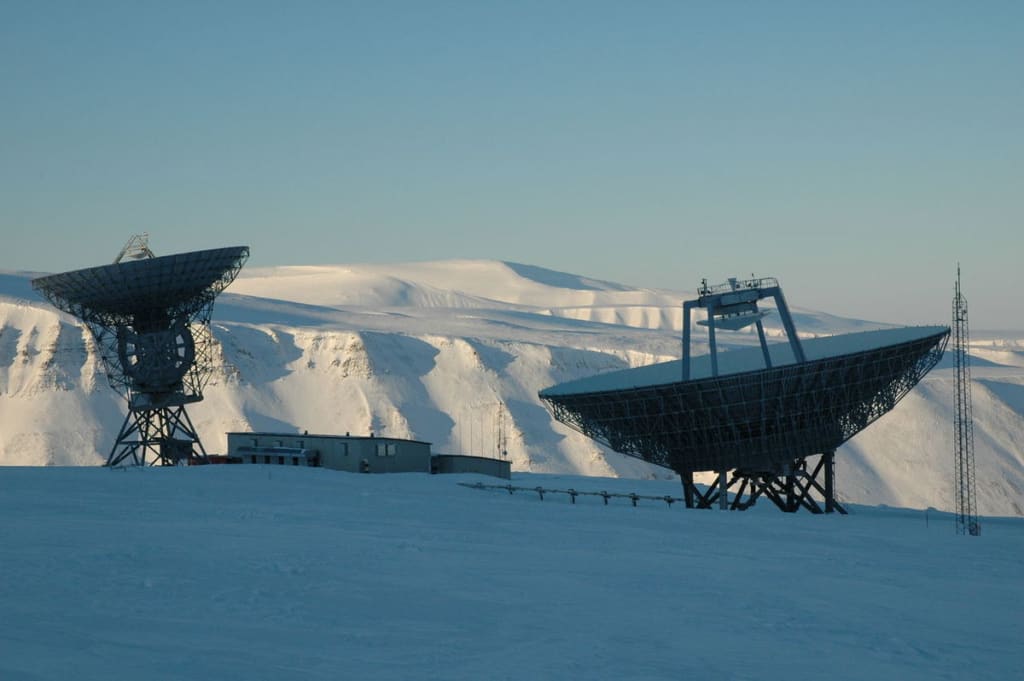Arctic Circle and Space
What do they have in common right now?

Venture far enough north in the freezing climate of Norway, Finland and Sweden and you may be a little surprised to come across satellites and facilities located in the middle of nowhere. Stumbling upon this would arise suspicion for most. Who could blame them? I for sure, would be skeptical with the arrangement.
In the far northern region of Tromsø, Norway is a research centre run by the University of Tromsø. The EISCAT is meant to be an international research centre, plans are being put into place for the EISCAT3D. Located at the site currently are satellites, a heating facility and research lab. It is an ideal place due to the distance between earth and near-earth space. With the proximity so close to the atmosphere and limited interference from light pollution, aircraft and in general society, it has become an important area for nations to understand space and the manner in which our planet is affected.
The current research question is, "how is the earth's atmosphere coupled to space (Unander, 2018)." By using radar observations and incoherent scatter technique, the researchers at the various sites across Scandinavia will be able to gather much needed data to determine and piece together the relationship our atmosphere has with both space and earth.
Right now, the signals are past from Finland to Sweden and finally, the Norwegian lab for data collection, analysis and observation for any changes that may have been observed. The "EISCAT3D will measure the spectra of radio-waves that are back-scattered from free electrons, whose motions are controlled by inherent ion-acoustic and electron plasma waves in the ionosphere. The measured spectra reveal high-resolution information on the ionospheric plasma parameters (Unander, 2018)." What this means is the researchers are able to take the information coming back to them and create a way picture which will allow them to understand what is happening in the earth's atmosphere. Space pieces such as meteors, space debris and changes in atmospheric pressure can be observed and monitored, all which, can have affects on our climate both atmospherically and geographically.
In Tromsø, there is one parabolic antenna, a rectangular VHF antenna, the Heating Facility, and research labs and areas for visitors. These antennae can be steered and directed at different points to collect and receive data from other areas such as Svalbard, Norway to Kiruna, Sweden and Sodanklyä, Finland. These latter two mentioned areas house similar facilities as well using the same antenna and lab systems to help the program function.
There has been some debate about the facilities heating capabilities and causing some disturbances within the local area. It is referred to as the Norway Spiral, but no concrete evidence is able to prove that the Heating Room and high frequency scatter radio-waves have caused odd phenomena conclusively. Many suspect in the scientific community such as James Oberg (2010) that it was a Russian rocket out boosting while spinning in an attempt to self correct a spin.
Either way, the research from this site could prove very useful in the future for tracking changes in atmospheric pressure, solar flares and other short-lived anomalies that we are only beginning to understand within our solar system.
If you are curious about the facilities, program or international cooperation at these sites, follow the link and read up on it more yourself. For those who are interested in the Norway Spiral (Blue Spiral), a link will also be provided for you to see an interesting phenomenon in the Arctic. What are your thoughts on the facility? Is it something of use for us moving forward into the future, or could this be a facility better used for some other type of research?
Information for the EISCAT program.
A short article about what the Norway Spiral was.






Comments
There are no comments for this story
Be the first to respond and start the conversation.